Published by: Nuru
Published date: 22 Jun 2021
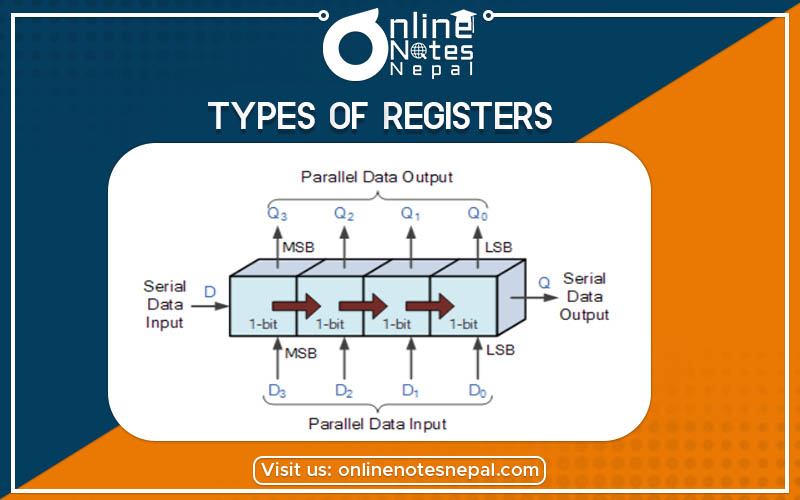
The types of registers are classified on the basis that they can accept data and instructions serially or in a parallel way. There are four types of registers we know. They are:
In this type of shift register, the data is accepted serially, i.e. the data is shifted serially in or out the register one bit at a time on a single line. This is done on the single clock control. There is only one output because the data leaves the shift register one bit at a time. It is the simplest of the four types of shift registers.
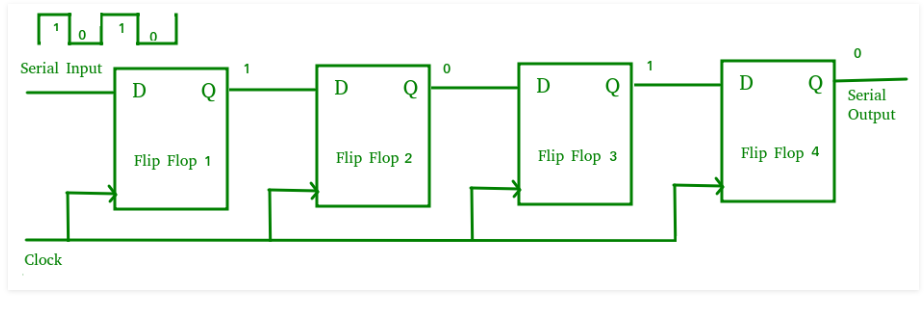
A simple Serial In- Serial Out Shift Register can be constructed using 4 D flip-flops as shown in the figure above.
First of all, we make the whole register clear, i.e. all the four outputs are made to be zero. Then, the input data is kept sequentially to the D input of the flip-flops on the extreme left. Now, during each of the clock pulse, one bit of information is transmitted from left to right to provide the input.
Finally, there is serial shifting if the data to get it out of the register. At the end of the read cycle, all the flip-flops of the registers are set to zero.
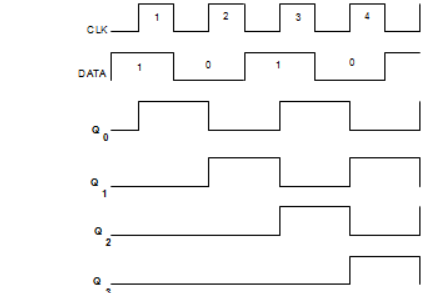
In this type of register, the data input is in a serial manner from the extreme left of the flip-flop. This output comes out in the single clock pulse. But if we input n bit data, then for receiving the output, ‘n + 1’ clock pulse is required.
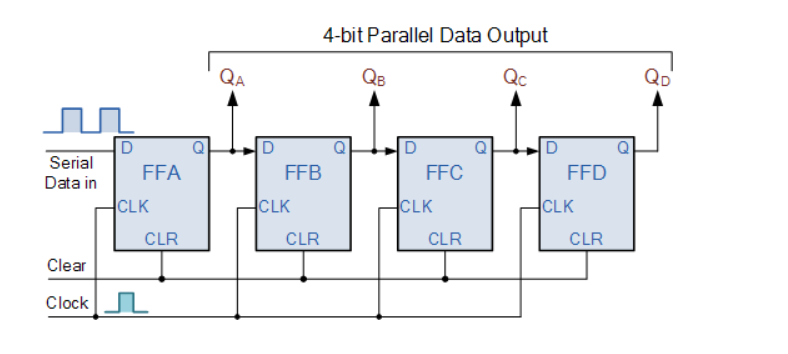
Let us suppose that all the flip-flops have 0 inputs. Now, if logic 1 is given to the first flip-flop, then Q 1 will set high and the remaining others will be at a low. then, the output of flip-flip A is shifted to one step right to 2nd one as its input. When the third clock pulse arrives, the value ‘1’ moves to the output of third flip-flop and so on. This process continues until the fifth clock pulse arrives and moves the output up to the last flip-flop.
The timing diagram below can show it more clearly.
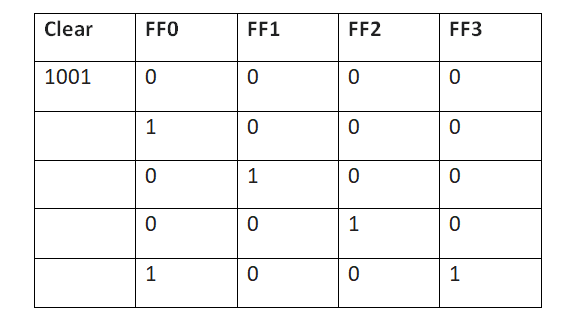
This circuit also uses the D flip-flop. It takes the input parallel.
This shift register acts in the opposite way to the serial in-parallel out register. The data is provided in the parallel format .e. all the data entered in the inputs one by one. The data is then read out from the right side. To write data in, the control line is taken to LOW and the data is clocked in. There is a shifting of data when the mode control lines are HIGH.
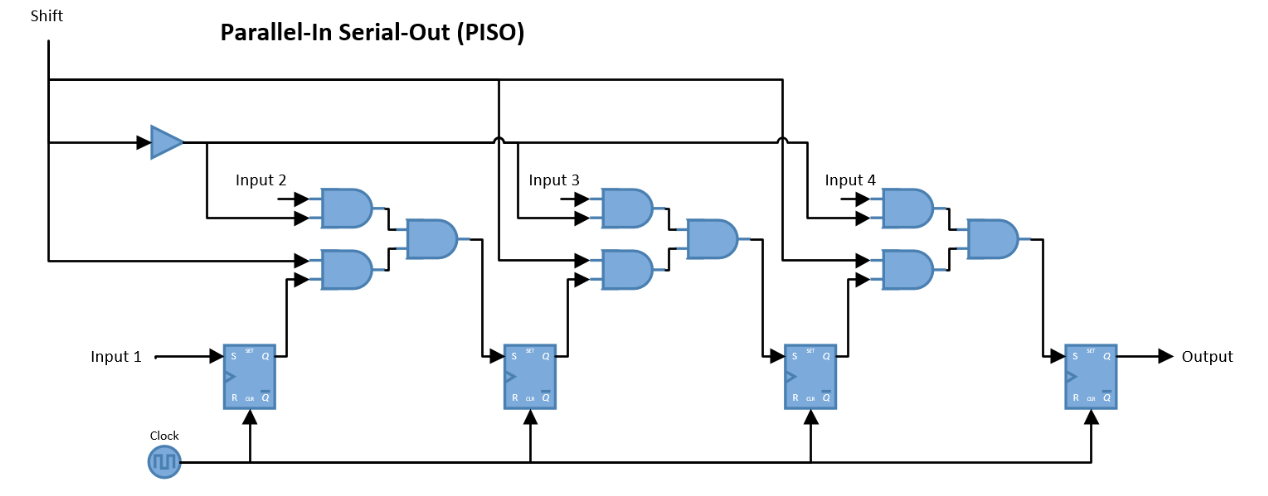
There is an advantage of this type of register. It converts parallel data into a serial format. We can use it to multiplex many different input lines into a single serial data and also send it directly to the communication line.
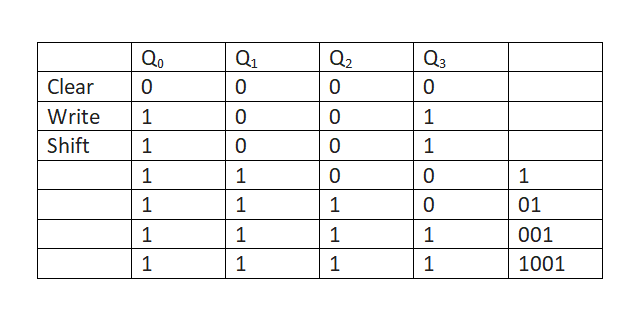
4. Parallel In- Parallel Out
In the parallel In- Parallel Out shift registers, all the bits of data appear on the parallel outputs immediately. This type of register acts as a temporary storage device or as a time delay similar to the Serial In-Serial Out register configuration. All the data is presented in a parallel format and then transferred together directly to the output pins. This immediately happens when the clocking starts. The one clock pulse loads and unloads together.
This is the simplest of all four configurations. Because only three connections are needed which determine what information enters the flip-flops.
